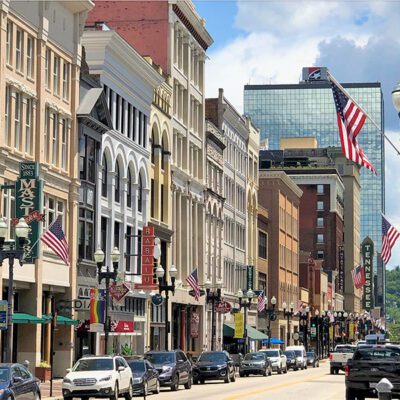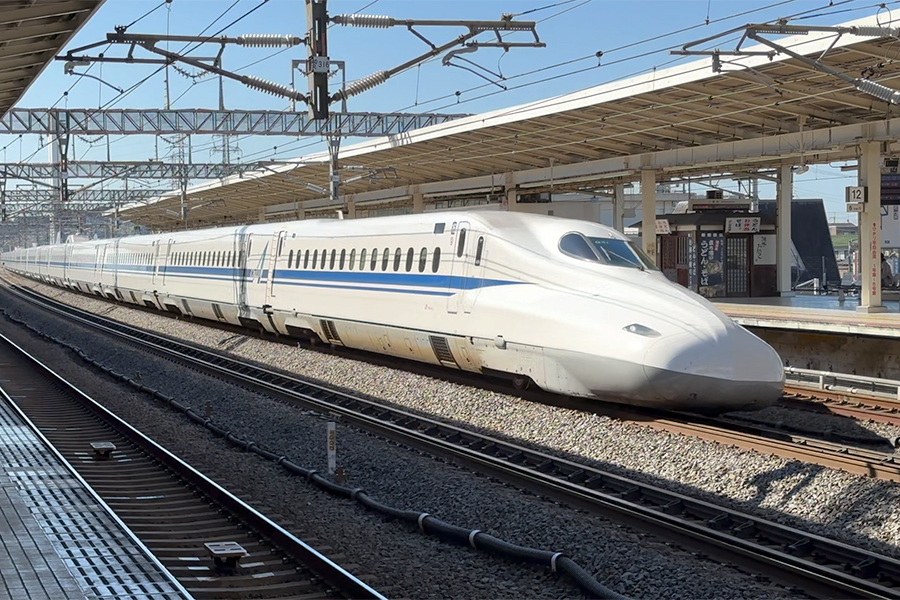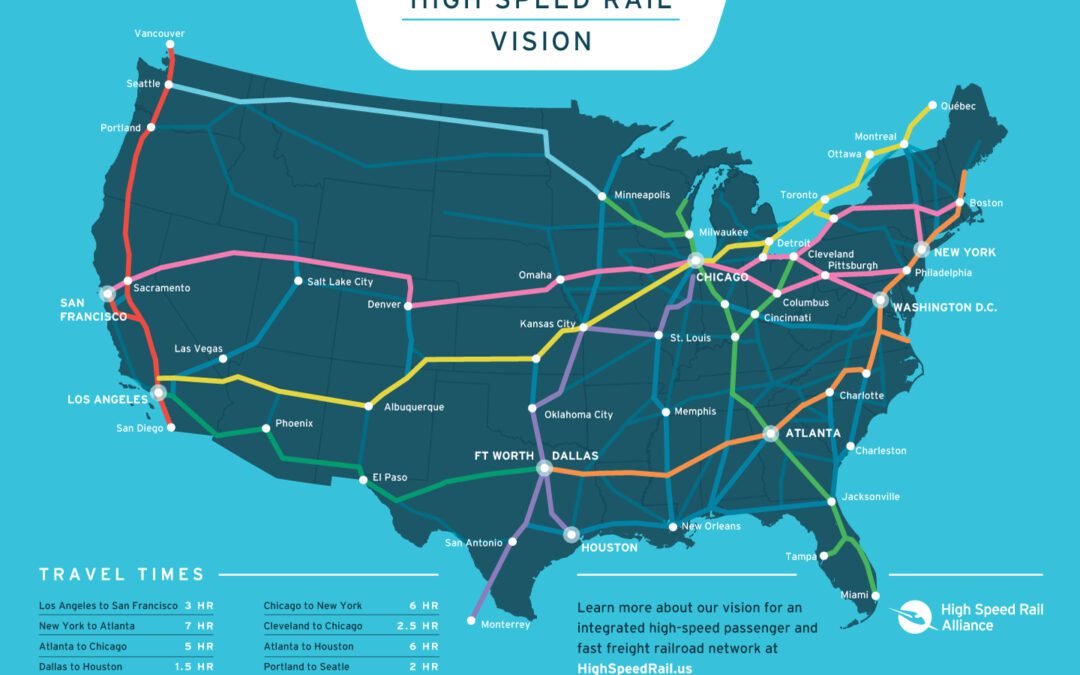Traveling last Friday through Iowa and Illinois, an eastbound Amtrak California Zephyr showed little or no sign of being affected by the CrowdStrike glitch and the cascading computer outages that followed. A morning announcement advised travelers that the café car...

Gay St. is the vibrant heart of downtown Knoxville TN, just steps from the train station. photo: Downtown Knoxville Alliance
Few cities can rival Knoxville’s combination of location, livability, and economic vitality. Eastern Tennessee draws millions of visitors each year—especially to the Great Smoky Mountains, the most visited asset in the entire national park system by a wide margin. It draws more than twice as many visitors each year as the Grand Canyon, the second-most visited park. Dollywood and the popular tourist town Gatlinburg are also nearby, on the outskirts of the Great Smokies. And Knoxville—with a metro area population of about 500,000–is home to the University of Tennessee (UT), which enrolls about 34,000 students.
From Knoxville, it’s about about 200 miles to Atlanta, Charlotte, and Nashville; and it’s a half-day’s drive (or less) to the flagship state universities in Alabama, Georgia, Kentucky, and South Carolina. All told, more than 110 million people live within 500 miles of the city. That’s more than twice the population living within 500 miles of L.A.
Yet, for all that, Knoxville has no passenger-train service, and it was not included in the Federal Railroad Administration’s (FRA) Southeast Plan. You can contact your elected officials in Nashville and ask them to submit plans for passenger rail to Knoxville.
What would trains add?
More tourism, most obviously. Atlanta, Charlotte, and Nashville have a combined metro population of about 11 million people. All should be connected to Knoxville by fast, frequent and affordable trains. They are a great distance for day trips or short getaways. And more tourists going to Dollywood and Gatlinburg would visit and spend money in downtown Knoxville, instead of bypassing it on highways.
But trains are about much more than tourism. They’re about creating a better place to live, work, and put down roots. A great example is the way trains could help Knoxville become a tech hub.
In 2021, three major institutions in the area—UT, the Oak Ridge National Laboratory (ORNL) and the Tennessee Valley Authority (TVA)—announced that they would partner with the firm Techstars to launch a startup accelerator. Their goal was foster 30 technology companies over three years. UT, ORNL, and TVA shared the $9 million cost of launching the project.
The collaboration brings together impressive resources. The TVA provides electricity to more than 150 local power companies across seven states. ORNL is located about 30 miles west of Knoxville and was a spin-off of the Manhattan Project during World War II. Billing itself as “the world’s premier research institution,” it employs nearly 6,000 scientists, engineers, technicians, and support staff. Key areas of its current research include clean energy solutions and other technologies to mitigate climate change.
The entrepreneurs chosen for the accelerator program spend about three months in Knoxville, learning to set goals, build a financial model, and create investor pitches and a product strategy. ORNL’s director called the program “just one step in the evolution of what I believe Knoxville needs to rise up to the level of the Silicon Valley or Austin or Research Triangle Park.”
Building Ecosystems of Innovation
So, Knoxville has a great foundation to become a tech mecca. Now, a regional network of fast, frequent trains would take it to the next level.
How?
Think of Silicon Valley. That region has an ecosystem of innovation made up of multiple sectors and scores of institutions. They include venture capital firms, startup incubators and accelerators, universities that train and provide a home for intellectual talent, and companies like Google and Apple that have wide-ranging R&D agendas.
What gives Silicon Valley a uniquely innovative ecosystem—its soul—is a culture that values cross-sector partnerships and synergies. Each sector builds on and feeds into the work of the others.
Which puts Knoxville’s location in a whole new light.
The city offers a natural beauty that rivals the Bay Area, drawing tens of millions of tourists every year. To be a new Silicon Valley, though, it needs to leverage its location to build a similar ecosystem of regional innovation.
Imagine if Chattanooga, Atlanta, Charlotte, Nashville and several major research universities were just a quick train ride away.
Regional flights can’t compete. The wait in the airport terminal is as long as the train trip would be. And cars don’t deliver the same kind of value. Because train transportation isn’t just about slashing the time it takes to get from one point to the next. It’s about creating ecosystems of innovation by building relationships and connections.
It’s no coincidence that Silicon Valley is served by a world-class transit system. Trains are connectivity machines. They not only make places much easy to get to. They bring people together. Instead of focusing on the road, train riders get things done. Trains open up the time and space for people to work, think, read, have a meeting—or simply relax and refresh.
That’s what trains could deliver for Knoxville. More tourists, certainly. But even better: Connected people. Collaborating institutions. Innovators who are moving the region forward—by investing their time building relationships and making connections instead of sitting alone, fighting traffic, in their cars.
The Latest from HSRA
Our Latest Blog Posts
Check out the latest news, updates, and high speed rail insights from our blog!





